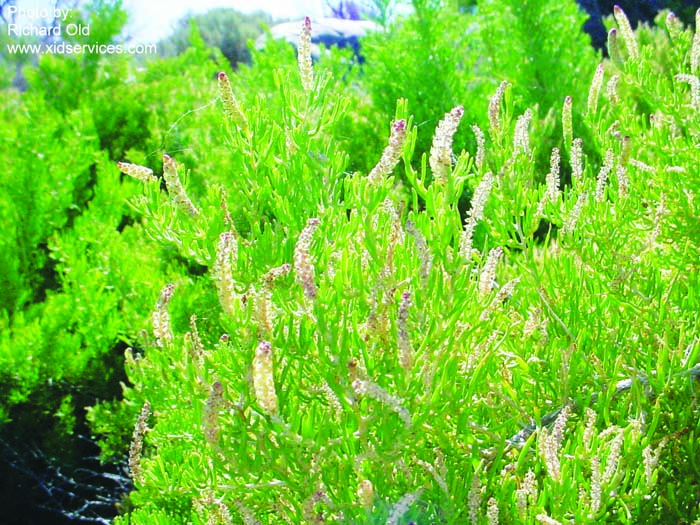Noxious weed of the week: Greasewood
Published 9:28 am Friday, February 2, 2024

- Greasewood has tubular leaves that resemble sausages.
The Enemy
Greasewood (Sarcobatus vermiculatus). This is a native plant that is fond of saline soils. This perennial shrub-like plant has succulent, sausage-like leaves that fall off in the fall like other deciduous plants.
These modified leaves tend to be spiny on their tips, which gives them the appearance of being thorny. The stems are light grey or look white, which is very noticeable in the late fall or winter.
This shrub can grow up to 8 feet tall but generally stays around the 5-foot level. The plant produces very small yellow to gold flowers. There is an abundance of this plant northeast of Baker City.
Greasewood grows slowly, but when in alkaline soils it will be fairly unnoticeable until it gets extremely thick. This plant is foraged by livestock and wildlife, but in large quantities it can be poisonous and the sharp spines can cause problems in the mouth of the animal.
The stems tend to shatter when broken, thus the fragments of the stem can get lodged in the digestive system. Sheep tend to graze on the leaves once they have fallen off the plant, thus they overgraze on them and can be poisoned. The plant gets thick and tall which will out compete desirable plants.
The defense
As this is a native, I only recommend controlling it or thinning it when necessary. Mechanical control is very difficult. Treating the plant with 2,4-D and an oil surfactant is effective in the spring, but I prefer to treat it with Opensight (1 ounce/acre), Milestone (7 ounces/acre), Garlon (Vaslan or Crossbow), or Tordon 22k in mid-summer when the plant is very green.
Combinations of these products may be useful depending upon other weeds at the sight. Once the plant is dead a consideration needs to be made on what to do with the skeletons.





